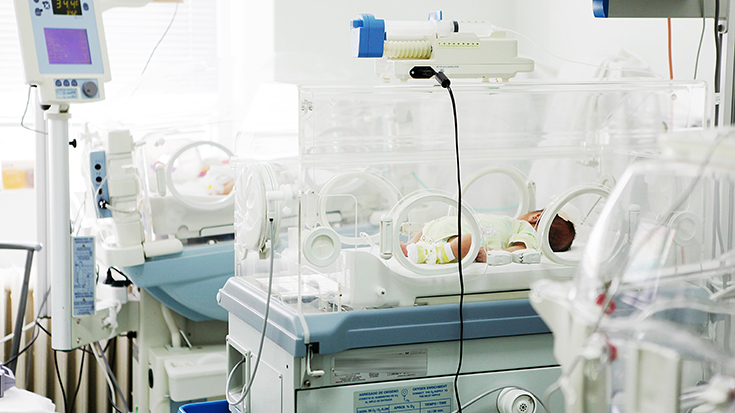
Respiratory therapists have a unique opportunity to work with patients living with chronic diseases. These diseases, like cystic fibrosis, are hard on the patient and affect them physically and emotionally. How do you help your patients find hope in their health challenges?
Empowering our patients
Krystal Craddock, BSRC, RRT, RRT-NPS, AE-C, once asked a COPD patient that was admitted for an exacerbation if he knew what COPD was. She wanted to get a better idea of his understanding of the disease. She recounted her experience:
He said: ‘there is no cure, I have bad breathing, and I am going to die from it.’
You could see he felt hopeless and helpless. I assured him that although there was no cure, it was treatable and that I would do everything I could to help him improve his day to day breathing.
At the end of our discussion, he felt empowered.
This story will always stay with me and I like to share it with others to show that RTs do make a difference in the patient’s life and their outlook on life!
Treat the patient, not the diagnosis
“By the time many of our patients learn their diagnosis, they may have lost as much as half of their lung capacity,” said Trina M. Limberg, BS, RRT, FAARC, MAACVPR. “As a respiratory therapist working with chronic lung patients, it’s crucial to allow time for patients to share their experiences. It’s equally important for us as clinicians to learn about their goals and what’s important to each and every one of them. We are treating patients, not their diagnosis.”
According to Limberg, the journey to diagnosis is unique for each patient with respect to the level of disease severity, the symptom burden, the rate of progression, and with the impact to them and their families. She suggests listening and asking what you can do to help and sharing your knowledge.
“Foster goal setting and celebrate the smallest of achievements. Involve supportive family members and friends whenever possible,” Limberg said.
Debbie Koehl, MS, RRT-NPS, FAARC, reminds her fellow RTs that it’s important to remember that patients who have chronic diseases are dealing with this disease on a daily basis.
“If you are in pulmonary rehabilitation or a doctor’s office or clinic, you may be establishing a longer-term professional relationship with the patient,” Koehl said. “You need to have patience and a listening ear.”
“Be empathetic and patient,” Craddock said. “These types of patients need support and to know that there is hope for them. Listen to their symptoms and stories to learn what you can do to support them and to improve their ADLs.”
For Alexandra Elliott, BSRC, RRT, AE-C, keeping a positive mindset will help your patient.
“Stay positive!” Elliott said. “If the patient is older, communicate effectively, speaking to them face-to-face, and try to speak clearly. If time allows, try to engage in conversation.”
Focusing on simple topics, such as the weather, gardening, family, or music, can help you start and continue conversations.
“If you have anything in common on any of these subjects, try to share a positive story,” Elliott said.
The RT role
“Our role is to be therapeutic, to improve symptom management through self-care, increase physical function, prevent further lung loss and support a better quality of life,” Limberg said.
Limberg feels that to carry out this role, RTs need to provide patients with knowledge so they can develop the skills required for understanding their treatments, such as using inhaled medication delivery devices, recognizing the onset of an exacerbation and knowing what action to take and when.
“When we get it right, we inspire and empower patients to make health-enhancing behavior and lifestyle changes,” Limberg said.
Koehl feels educating the patient and being a disease management partner is vital, and reminds RTs to never assume what a patient does or doesn’t know. She also suggests RTs be an advocate for the patient, helping the patient understand and work with their home care company.
“Knowledge is so important in guiding the patient to become their own best disease manager,” Koehl said. “We need to meet their needs, but we need to ask what their needs are.”
As experts in chronic lung disease, Craddock feels RTs “should be at the forefront of the multidisciplinary care of chronic lung disease patients to educate the patient, family, and care team, as well as make recommendations based on the patients’ health and social situation.”
Elliott believes the RT can be a critical educational component between the doctor and patient, helping the patient better understand respiratory medications.
“Sometimes medications are prescribed but not demonstrated or explained to the patient,” Elliott said. “Knowledge is power and can lead to better adherence, confidence, and independence.”
Tips for helping your patients
Limberg:
- Be well-read and stay current on the latest treatments and evidenced-based guidelines.
- Be actively involved in AARC Specialty Sections and networking with colleagues, which provides a community of professionalism and resourcefulness that RTs can pass on to their teams and ultimately to their patients.
- Help your patients realize their own potential.
- Teach them about the things they can change, such as how they take their medications, use breathing techniques to get up the stairs or clear their airways with device use.
Koehl:
- Depending on the disease, encourage patients to enroll in pulmonary rehabilitation. Besides the benefit of education and exercise, the support from other patients and staff members can be a lifesaver for many patients.
- Be an encourager, motivator and help the patient understand that they are their own best advocate.
- Encourage patients to keep a notebook for questions and to help them track their physician appointments. None of us can remember everything, so the notebook will help them to be prepared with questions and conversations for their health care team.
- Help the patient and family find support groups whether live or online. Show them helpful organizations, such as the COPD Foundation, Pulmonary Fibrosis Foundation, CF Foundation, AARC, AACVPR, ALA and many others.
- Help them reach their disease management goals within the constraints of their life and with their goals.
Craddock:
- Let the patient know that there are options and that their disease is treatable.
- Learn what isn’t working for the patient and why.
- Assess what the patient hasn’t tried yet and speak to the care team and make recommendations.
- Be patient and kind.
Learn from your patients
“I have been working in pulmonary rehabilitation for 35 years. It’s truly gratifying work. Any time a patient shares their feelings and fears it is because they feel safe with you,” Limberg said. “I believe if you want to be good at this you have to learn from what patients tell you.”
Want to learn more?
Pulmonary rehabilitation is an important aspect of managing chronic pulmonary disease. The Pulmonary Rehabilitation Certificate Course offers respiratory therapists the opportunity to earn a specialized certificate in Pulmonary Rehabilitation. They will also increase their value as a respiratory therapist by helping patients experience the benefits of a comprehensive pulmonary rehab program.
2018 Pulmonary Rehabilitation Certificate course
Email newsroom@aarc.org with questions or comments, we’d love to hear from you.















